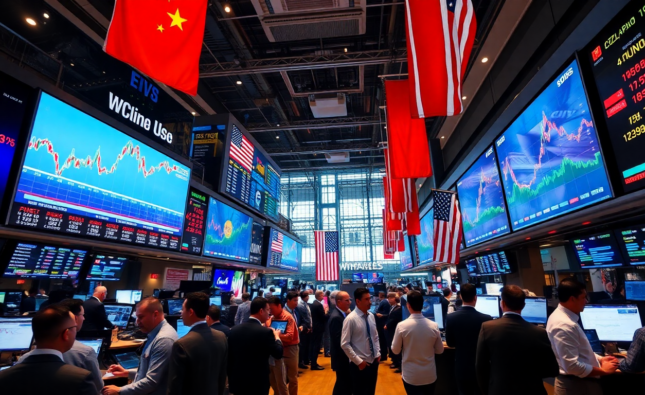
US and Global Economies to Slow: 2.8% Growth Rate Amid Tariff Uncertainty
Introduction
The US and global economies are projected to slow down significantly. A recent report has highlighted that the growth rate is expected to trim to 2.8%, largely due to ongoing tariff uncertainties. How are these economic challenges impacting businesses and consumers around the world? Read on to learn about the factors contributing to this economic slowdown and its potential ramifications.
Understanding the Current Economic Landscape
The global economic environment is becoming increasingly complicated due to multifaceted trade policies. The clash of various tariffs among leading world economies is, by and large, affecting global market stability. For instance, the US-China trade tensions have been a major battleground, influencing the economic growth forecasts internationally.
The Impact of Tariffs
Tariffs are essentially taxes imposed on imports or exports, used as a tool of economic policy by governments. A sustained tariff environment has several immediate and long-term impacts, including price hikes for consumers, disruptions of supply chains, and a general slowdown in investment from businesses wary of unpredictable policies.
Learn more about how tariffs affect daily living.
Regional Effects of Economic Slowdown
While the US itself faces challenges, the ripple effects impact other regions just as much. Emerging markets, particularly those heavily reliant on exports, are seeing a sharper decline due to reduced demand from larger economies cutting their imports.

The following regions are experiencing different degrees of impact:
- Europe: Struggling with internal challenges such as Brexit, further dampened by global trade tensions.
- Asia: Particularly affected by reduced trade volumes with the US and EU markets.
- Latin America: Decreased exports leading to internal economic adjustments.
To navigate these changes, several regions are diversifying their trade partners and focusing on intra-regional trade agreements.
What Does the Future Hold?
The overarching question remains: what does the future hold for global economic growth? The IMF illustrates possible recovery scenarios that depend on several factors, including easing trade restrictions and global cooperation on economic policies. Robust policy actions and strategic alliances might pave a slow yet steady recovery path.
Discover the strategies for economic recovery.
Conclusion
In conclusion, global economic slowdowns are challenging yet manageable with appropriate strategies. The projected 2.8% growth rate due to tariffs highlights existing vulnerabilities, but it also emphasizes the opportunity for adaptive policy-making and international cooperation. Stakeholders should prepare for potential shifts and engage with forward-thinking initiatives to safeguard against looming economic downturns.
Subscribe to our economic newsletter for the latest updates.










Comments